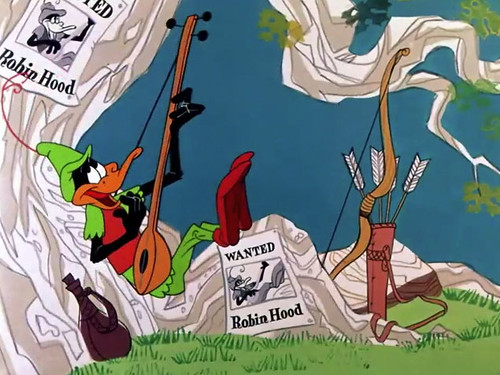
Title - Gee Whiz-z-z-z-z-z-z
Director - Chuck Jones
Released - 1956
Interesting Fact -- Last cartoon where Jones credited himself as "Charles M. Jones".
Reason for Placement --
Ladies and Gentlemen, I give you what is probably one of the quintessential Wile E. Coyote/Road Runner cartoons. This was the 8th toon featuring this classic pair, but it contains some of the most memorable visual gags ever featured in the Looney Tunes.
So, let's get right down to it and look at the gags that help make this such a great cartoon. For me, there are two moments that help Gee Whiz-z-z-z-z-z-z really stand out. In the first one, Wile E. orders a Bat-Man suit that will allow him to fly after the Road Runner (no, not DC's Batman, this is a green suit with bat wings [see above photo], no Christian Bale jokes necessary). He spreads his wings all menacing-like, dives off the cliff... and starts plummeting to the ground. But instead of splatting as usual, Wile E. actually gains control at the last minute and start soaring! We see Wile E. flying, smiling proudly (no music in the background, just great sound effects provided by Treg Brown), it looks like he's really got the hang of the suit, and... WHAM! Right into the cliffside! And NOW we get the scene of him falling and splatting on the ground. Great build-up with even better pay-off, this is easily one of the greatest moments ever in WEC/RR history.
The second is the last gag: Wile E. straps a pair of handlebars on a jet engine and uses it to zoom after the Road Runner (accompanied by everyone's favorite Raymond Scott selection, "Powerhouse"). However, as the Road Runner nears the edge of a cliff, he does a U-turn, and Wile E. zips right past him, off the cliff! But he doesn't fall, and the engine keeps going with the coyote onboard, completely unaware that he's gone off the road. Disgruntled at having lost his dinner, Wile E. turns off the engine to think, still in mid-air, just inches away from the other cliffside. The Road Runner (who made it to the other end of the cliff), beeps to alert his foe of what is going on. Wile E. then violates the #1 cartoon law of physics: when defying the law of gravity... NEVER LOOK DOWN!
As he falls to his doom (yet again), Wile E. hold up a sign asking the director to end the cartoon before he hits. Jones is apparently willing to grant the coyote his last wish and irises out, but not before Wile E. can hold up another sign, thanking the animators.























